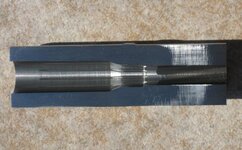- Messages
- 14,046
- Reactions
- 42,959
Only reloading I ever did was with .308 and it seemed pretty straight forward.
I've heard bolt action long rang shooters like to keep the brass for the same gun after fire forming it to the chamber but I'm not in that league yet.
I've heard bolt action long rang shooters like to keep the brass for the same gun after fire forming it to the chamber but I'm not in that league yet.












